
The quadratus lumborum, aka QL, is one of the deepest muscles of the posterior trunk, and forms part of the posterior abdominal wall. It attaches to the posterior iliac crest (the back of your pelvis) and inserts at lumbar vertebrae 1-4 and at the twelfth rib. This muscle is often referred to as the “hip hiker” because it elevates the hip when we walk, allowing the leg to swing through. The QL muscle also anteriorly tilts the pelvis, laterally flexes the trunk, extends the trunk, and assists in forced inhalation and exhalation by fixing the 12th rib in place when the diaphragm contracts. One role of the quadratus lumborum as a component of the posterior abdominal wall is to cushion and protect the internal structures located anteriorly in relation to it, which include: the kidneys, colon and diaphragm.
The quadratus lumborum plays a very important part in postural stabilization. Together with the psoas major, the QL wraps around the lumbar spine thus stabilizing it. It is therefore vital that both the QL and psoas are strong and flexible in order to allow the spine ample stability and movement. However, our modern jobs that often involve sitting at a computer for the majority of the day are quite contradictory to the health of these two muscles. In focusing on the QL, habitual sitting causes contraction of these muscles, ultimately resulting in overuse and weakness. Low back pain is a common complaint among adults in our society and a weak QL often plays a part. Consequently, it is vital that we find ways to counteract this negative pattern on our QL muscles. Yoga Tune Up® provides many fun and creative ways to improve the tonicity of these overly contracted muscles, resulting in relief from low back pain, as well as necessary stability for the spine. I would like to share three Yoga Tune Up® poses to practice in order to tone and release the QL:
(1) Boomerang on the floor or at a Wall: through simple lateral flexion of the spine, one QL contracts while the opposite releases and lengthens.
(2) Twisted Child: this pose provides a wonderful release to the QL muscles as the spine rotates under the hips.
(3) Sidewinder minivini: The QL and abdominal obliques are contracting to laterally flex the spine from side to side in this dynamic pose, which strengthens and lengthens the QL muscles as we move side to side.
*Another really great way to release the QL if it is in constant contraction and feeling tight, is to place a Yoga Tune Up® Therapy Ball between the quadratus lumborum and the floor, and massage along the length of the muscle. This could provide relief to the muscle, as well as the connective tissues surrounding it.
Read more about lower back pain relief.


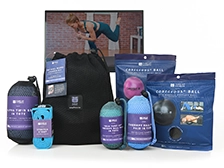
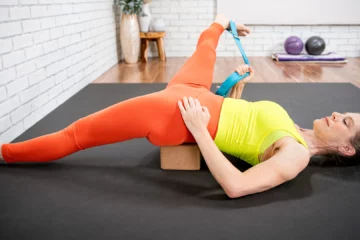
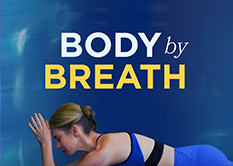
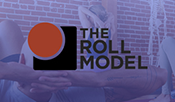



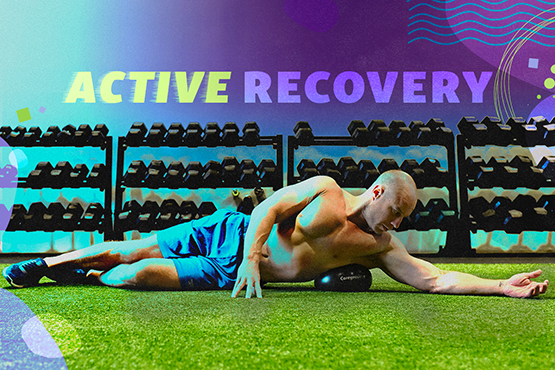
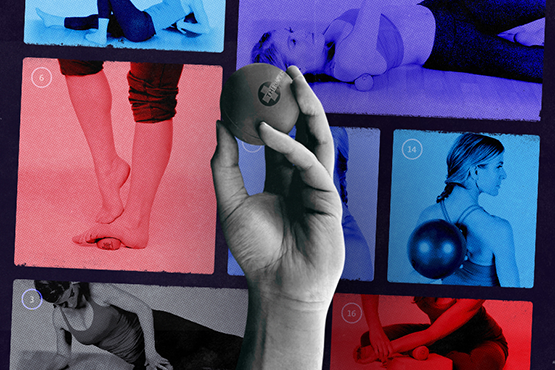
Great explanation of how the QL works and how to strengthen and release.
i love how the sidewinder feels crazy good &crazy hard at the same time in my body. Dynamic stretching is my favorite!
I talk to my massage clients about their QL’s a lot — thank you for this wealth of information I can share with them!
Thanks Amanda for thèse poses to release and strengthen our QL’s!
I loved reading this article and finding out more about the QL.
-Would it be correct to say that the QL is deeper and lower than the erectors of the spine?
-This article made me think of my dad. He has bad knees and hips, drove a truck sitting down for all of his life and has sever lower back pain. I’m thinking he has no strength in his QL or psoas to help stabilize his spine. The first exercise is something I could give to my dad to do and have him roll on the Yoga Tune Up balls to hopefully find some relief.
Thanks so much for the info on the QL. Lately, I’ve been experiencing tightness in that area and have been quite successful in releasing the tension through use of the therapy balls.
WOW! I thought I knew this muscle until I read your post! Thanks for writing about all the important functions of the QL. I had more to learn…this is one area of the body that regularly talks to me and I love to stretch it out (boomerang, parallel triangle and parighasana) as well as strengthen it with sidewinder. I also appreciate many of the comments – so much valuable knowledge out there. Thanks for the post and sharing what you know so others could share what they know, too!
Thanks for the great anatomy review for the QL. It is a muscle that is often ignored and rarely treated or addressed separately in physiotherapy as a cause for low back pain. The outline of the 3 exercises was a great reminder and can be easily taught both in yoga classes as well as treatment exercises in part of a physiotherapy plan.
I like the suggestion of twisted child’s pose as a way to release a tight QL. I teach restorative yoga and often use supported twisted child’s pose in class to help students release through the low-back. Admittedly though, I had not made this connection of it specifically creating relief for the QL muscle and will be sure to educate my clients/students of the importance in finding a balance between stretching and strengthening this important muscle. Thank you!
I find that the QL plays a role in being weak and tight on one side with so many of my clients. I also understand that there are more muscles/tissue involved, but that QL is the star. After going through the Embodied Anatomy Training with Sarah Court, I can definitely help my clients meet there QL face to face!!!! I love “SideWinder” and can’t wait to put it to good use!!!!!
New to the in depth anatomy and all the names and locations of the muscles, everyone in training was throwing around the word ‘Ql” and I was in the dark, thank you for and great intro to the Quadratus lumborum.
I love sidebends not just in yoga but weighted sidebends at the gym. I love how you emphize the need not only to tone your QL but to strengthen. As you point out lower back pain can be a direct result of a weakened QL. I never thought about a muscle playing a role as a protector of some vital organs. We all need to be more aware of our amazing inner workings.
I liked your description of the QL as the “hip hiker”–this really helped me map the location of this important muscle in my own body. Thank you!
I have learned more about the QL and the importance of this muscle in the Level 1 training. i am fascinated by this particular muscle now and am determined to share this information to my students. I have always thought of the QL as a back muscle. i have been educated and informed…thank you.
We spent a lot of time working with the QL on day 2 of the training and this is a nice comprehensive review of the QL and all its function.We discussed, as also stated in the article, the importance of strength and flexibility in both the QL and Psoas to maintain a healthy spine. Modern day lifestyle challenges this and so we have to work to counteract the overuse, tightness and weakness of the QL (and psoas) caused, in part, by how much we sit. In class we did Boomerang, Sidewinder as well as apanasana w/ abdominal contraction all of which target the QL and psoas for both strength and flexibility.
I appreciate the added detail of this post in explaining how the QL and the iliopsoas can shorten in the seated position causing lower back pain. Is it a shortening of these muscles that causes lower back pain, a overstretching of other muscle groups, or both? I will be sure to keep these muscle groups in mind when pursuing realignment after a long day of driving or office work.
Thank you for the (much needed) reminder that my QLs need a lot more love than I give them.
Sidewinder minivini is a lot of fun and I want to start doing it with my daughters as they’ll be happy to join in the fun and that’ll keep me going.
For as long as my day job has me sitting at a desk for hours at a time, I’ll need reminders like these.
Thanks again
Thank you so much for this post. I have a newfound interest in the QL. I have a spondilolysthesis L5-S1 and recently discovered that my QL was tight. I love rolling out my QL with the YTU therapy balls. Thanks for the reminder to do these 3 awesome poses.
I totally forgot that these muscles do act as a cushion to the organs. Since they are innervated in very similar vertebral segments, will their over contraction / tightness lead to pinching of the stimulatory nerves of vital organs leading to a compromise in function. You’ve given me something to thing about….
I have been very ignorant about the QL until now. I didn’t realize that strength of the QL can diminish the possibility of lower back injury. Thank you for sharing the postures that can strengthen and stretch the QL. I will now use them as prescription to my students!
Amanda, Thank you for such detailed information about Quadratus Lumborum. I have had a tendency of letting my lower rib cage stick out. In addition to working on strengthening my abdominal muscles, I realize that it is also crucial that I stretch my QL so that it is not pulling the lower spine into extension, causing antierior pelvis tilt and pushing the lower cage forward.
I have been using the tune-up balls to relieve stress build-up and tension in my lower back…they have been awesome for me, and it’s a favourite with my students. Not only for the lower back for referral pain in the hips, buttocks and the sacroiliac joint. A tight QL restricts pelvic movement causing trigger points in the gluteus minimus muscle which can cause symptoms of sciatica. Love rubbing out the QL, one of my favourites for the YTU balls!
Great info! Funny to discover the unblanances right? bydoing this afternoon the sequence you mention, I’ve noticed again that my right side -injured- has less range for lateral extension than the left….mm just connecting dots and I guess it will never end. Love it.
Thank you for posting this, I’ll maybe try to balance by not doing so much the opposite side? (among other movements of course , related to the area and surrounding areas linked to my injuty)
Ah, the QL. The quadratus lumborum is such a mischievous muscle. So important for stabilizing and often people have never heard of it. In my massage therapy practice it and the psoas are in the top five muscles people need some love for in my studio. For those with issues for the low back the QL to be addressed more than I can do in the session time I have with them so the out comes education with the therapy balls. Excellent article by the way. 🙂
At our YTU training today we practiced revolved abdominal pose and it brought to light a weakness I have in my QLs — thank you for this thread, I’ll will definitely be paying more attention to them in the weeks and months ahead!
Thanks for this thread. QLs are under-explained muscles in yoga on the whole given how much back bending goes on in the average class and how much of it ends up as a major load on these guys. I came to yoga as a ‘back-bending’ performer and didn’t realise I was being paid to get on stage shorten and tighten my QLs until I attempted child’s pose and quickly sprung out! Really… a contortionist who can’t relax in child’s pose… it baffled me until I realised that I was perpetually abusing those muscles back there that were working so diligently for me. I learnt how to give them some forward, side-bending love and child’s pose became that comfy little ball it looked like it was for everyone else! Needless to say I cannot get enough of shimmying the YTU balls into my QL’s!
I’m looking forward to emphasizing and discussing the QL to my students. Given that so many people complain of lower back stiffness and pain, adding particular movements to strengthen th QL as well as the psoas is definitely going to be part of my classes. Being in Jill’s current Level One Teacher Training in NYC has given me a new respect of the major and minor muscles in the lower back, spine and pelvis regions.
it is amazing how few people know about the existence of their QL and i love love love being the one to reveal it to them. as soon as theyve found it, the expression of relief is so intense to behold! what i often find though, is that though i am quick to look for it as the culprit in my client’s low back pain, i often forget about it on myself and wonder why i suddenly have pain in my lower back. i literally have to stop and remember that i need to do certain stretches and exercises that target my QL! maybe because i cant see it i forget about it? i dontknow… thanks for this.
[…] By: Terry Littlefield | Friday, December 7th, 2012 | Comments 1 Category: Back Pain, Lower Back Pain, Pose Videos | Tags: Back Pain, Healing Lower Back Pain, Lower Back Pain Exercise, yoga tune up As mentioned in my previous article, YTU Sidewinder exercise is unbelieveably great for the QL. […]
[…] Tune Up® Blog « Introducing The Quadratus Lumborum The Importance of Good Posture […]
[…] relief, I now start clients having chronic pain issues with YTU Therapy Ball work on their quadratus lumborum followed by a sequence of leg lifts with arms overhead on a wall. The ball work softens up the […]
[…] and hip flexors or Psoas muscles, and an over stretching of the antagonizing low back muscle, Quadratus Lumborum (QL). The QL is vital to maintaining a healthy back and spine and even contributes to healthy […]
[…] everyone has experienced or knows someone who has. One of the culprits of low back pain is the quadratus lumborum. Although rather small, it’s a very powerful muscle that wraps around the lumbar spine and […]
Thank you for offering this piece of information. A lot of the people I heard complaining about lower back pain are middle-aged woman, including my mom. I am wondering if it’s because when woman carry babies, this muscle are over-used to bear the weight of the belly? And after birth they never get enough stretchiness for relieving? Even woman at a younger age, we contract this muscle way too often than we think. I was watching at my workers in office today, nobody is sitting with a straight spine, everybody is crouching towards the desk. I will try the poses often to release my Quadratus Lumborum!
After just experiencing the magic of the QL self-massage technique with the YTU balls, I feel elated! I have scoliosis that comes complete with one very hiked up hip. By “scrubbing” out the tension in QL, I felt a significant difference in yoga asanas such as happy baby and simply sitting upright. I’m excited to have discovered this muscle and to give it the love it deserves!
Although I knew to teach clients to stretch them, and they are often overused and tight but I had not been thinking of the QL’s as the “Back abdominals” partner in postural stabilization. Since doing the Yoga Tune Up Teacher Training, I am now much more aware of the need to stretch and strengthen them in order to have a more balanced core support system. I particularly found the dynamic stretching in Yoga Tune Up exercises such as sidewinder and the revolved abdominal variations useful in understanding the relationships of these muscles to spinal stabilization and rotation.
Great information about Quadratatus Lumborum, its location, and how it effects our posture. On the other hand, the sequences are effective and helpful to treate this muscle and bring it back to healthier situation. Thanks!
I really like the options you have given to help release, lengthen and strengthen the QL. My favorite way to release tension is to use the yoga tune up balls. The result is incredible afterwards. Thank you for sharing more information about such an important muscle and making it available to others.
Thanks Amanda! A while ago I had low back pain and I was told that I simply needed to strengthen my core muscles to protect the low back. This article adds onto this piece of advice with the vital addition of strengthening the QL in order to have a healthy back.
It’s great that you have addressed one of the ways of addressing the oh so common low back pain, and made it clear that the Q.L. muscle needs to be both strengthened and stretched. I think many people have the believe that the Q.L. only needs to be released or stretched.
More great information about this oft ignored muscle. As a sufferer of low back pain, I will definitely be doing these exercises to help strengthen my QL….and, of course, I will be using my YTU Therapy Balls to help massage and soften those tissues! 🙂
So great you suggesting 3 exercises! I almost forgot about YTU Boomerang *at the wall, It’s an exercise you can do anywhere:) I’m sure most people consider this muscle a back muscle I consider it a sneaky abdominal muscle – as you said either way exercise and massage in this micro region will add up to all things healthy in posture. Thank you!
The Q.L. is one of my favorite muscles. Any amazing multi-tasker and beautiful! Almost always forgotten in regards to strengthening/ releasing. thanks for the 3 specific excercises.